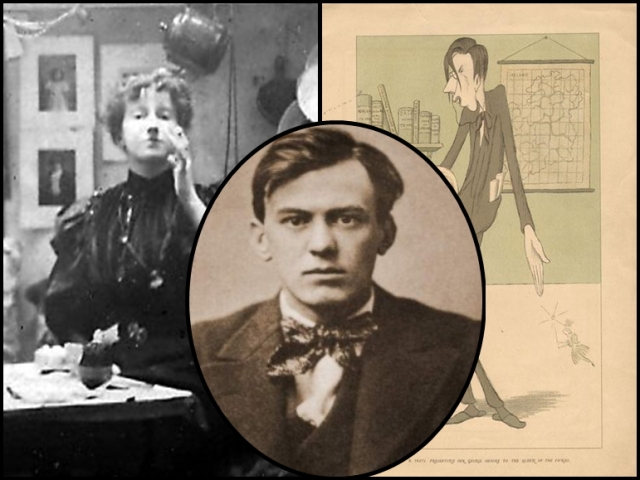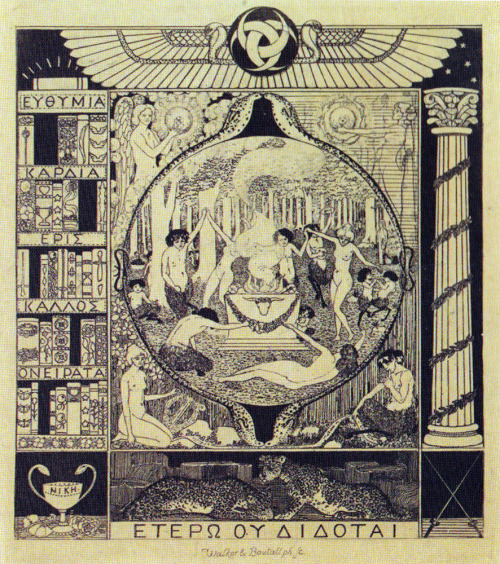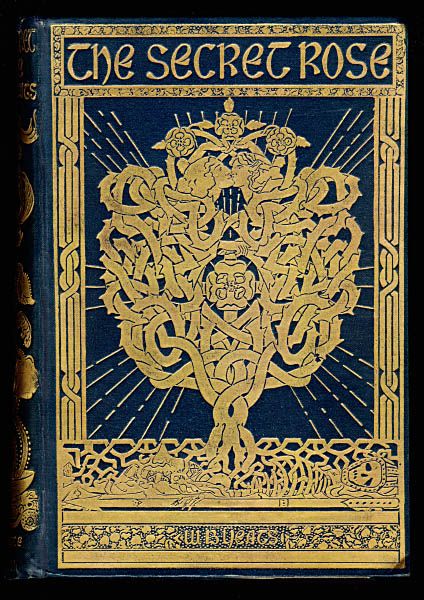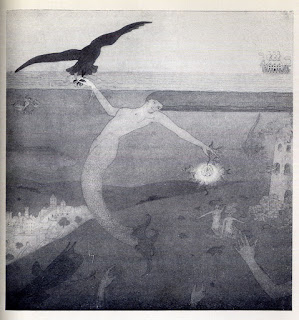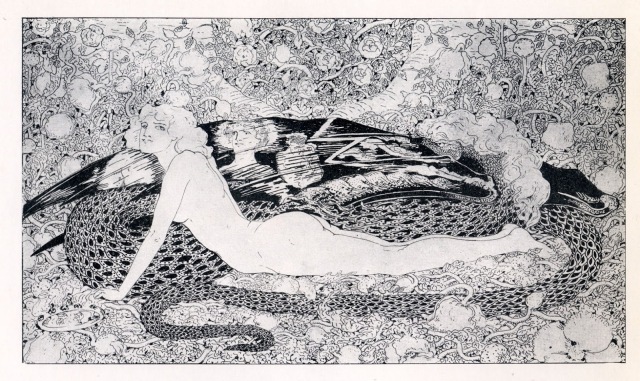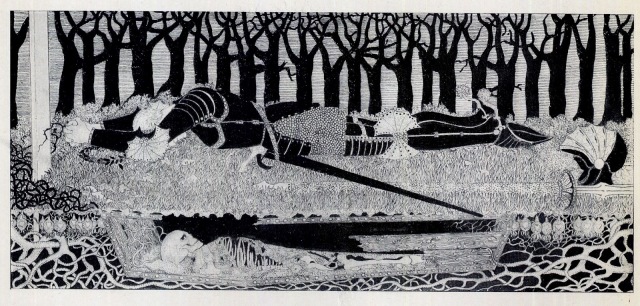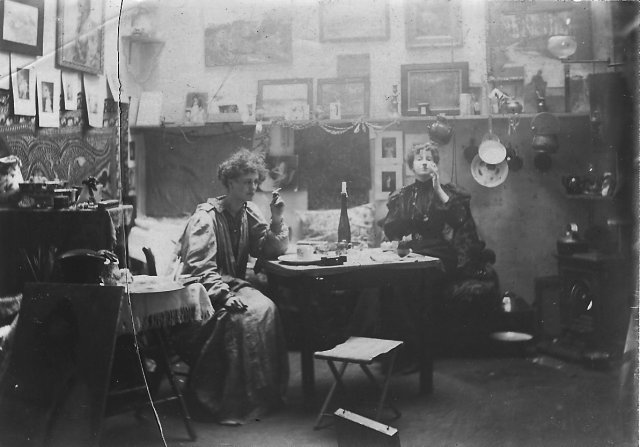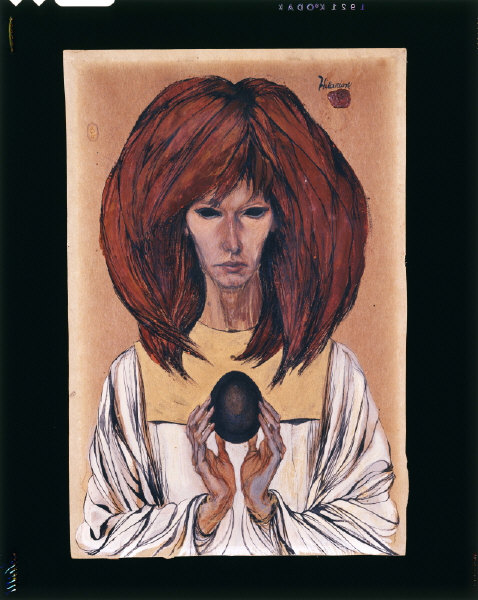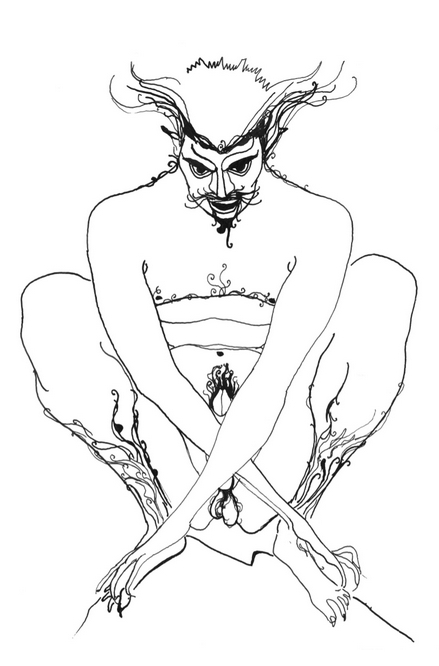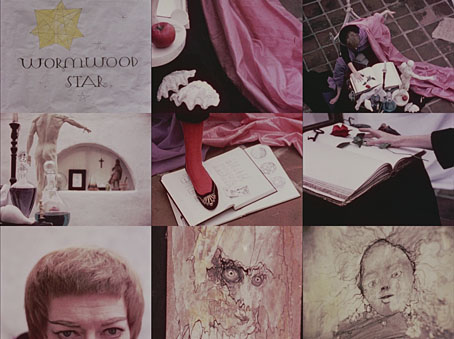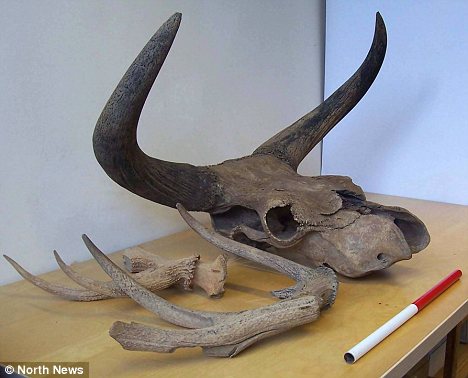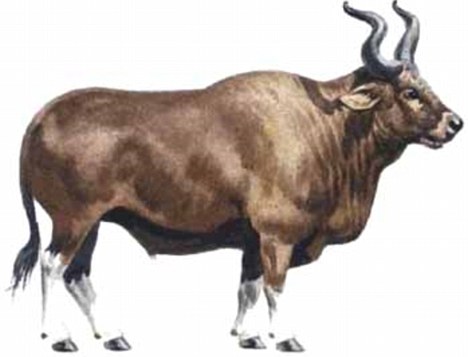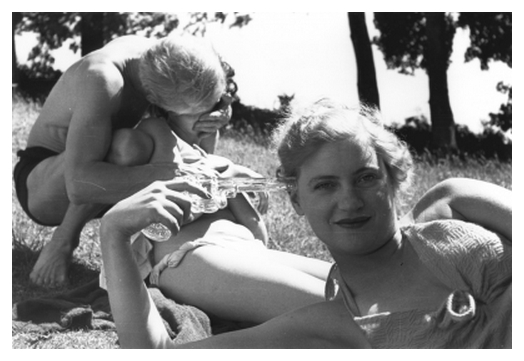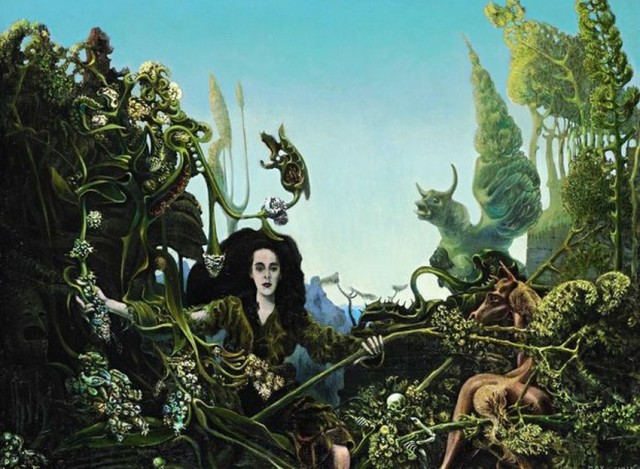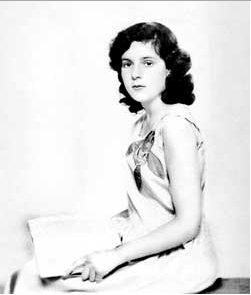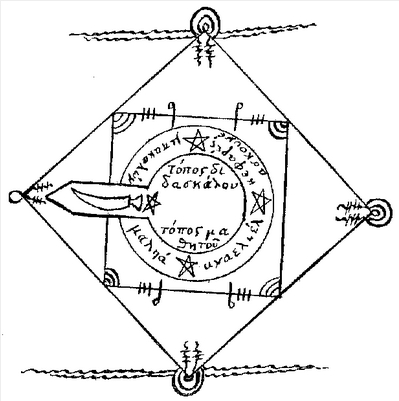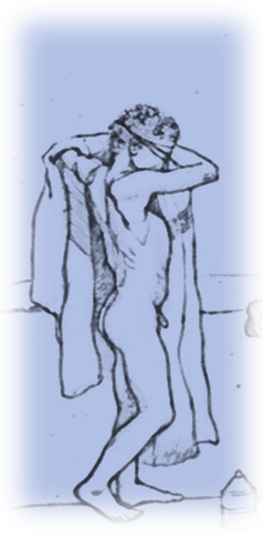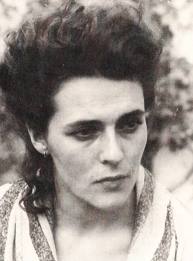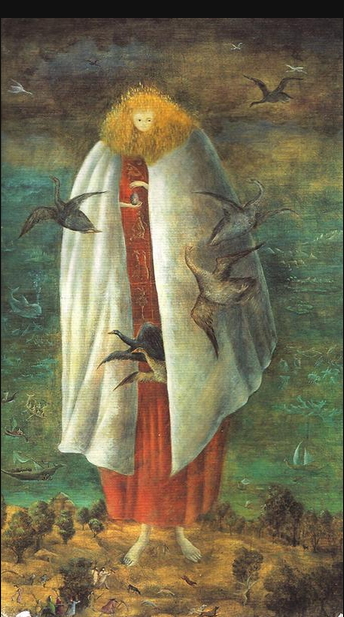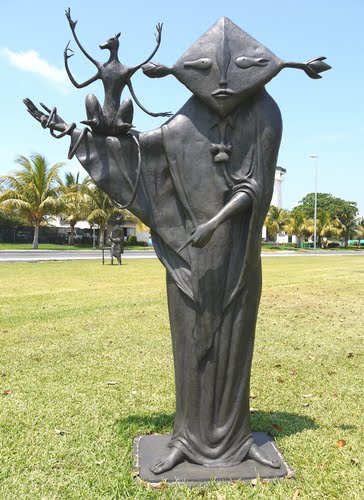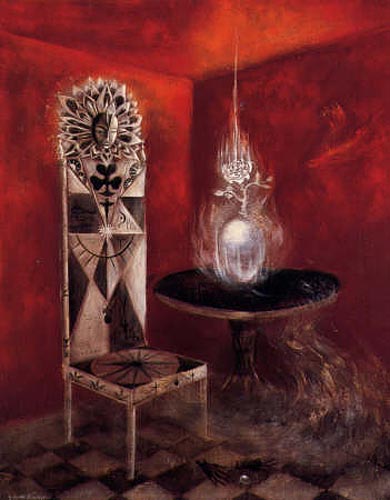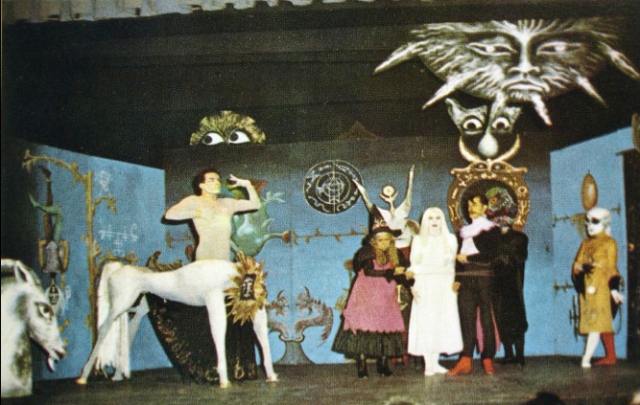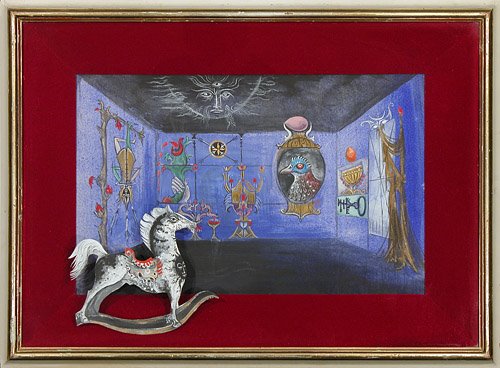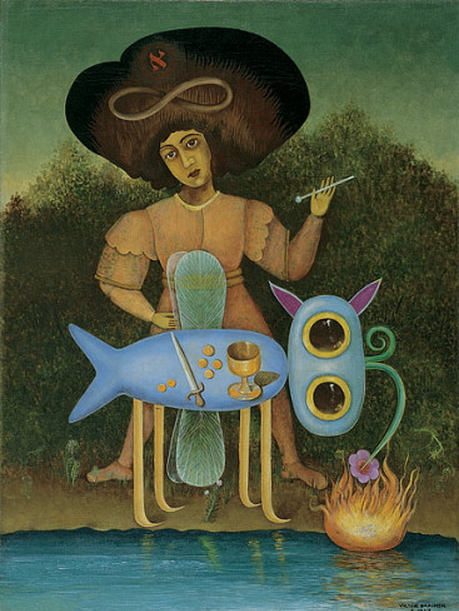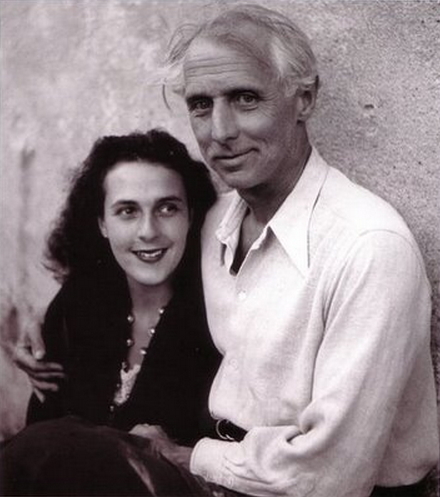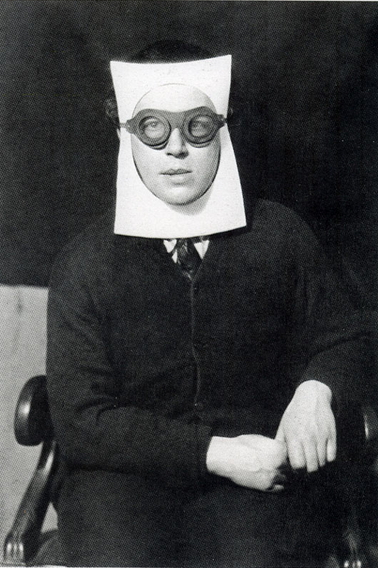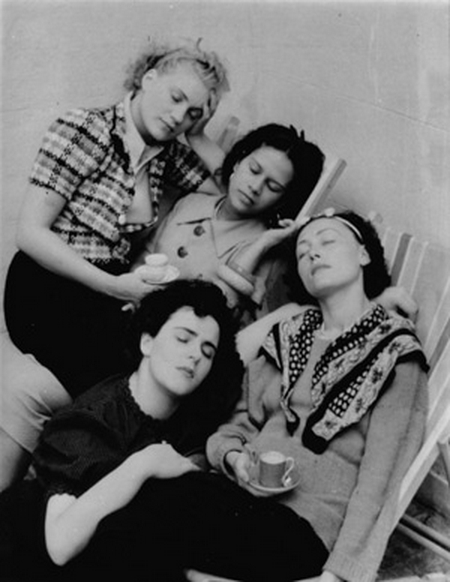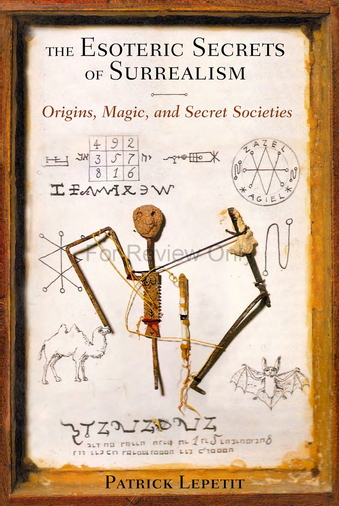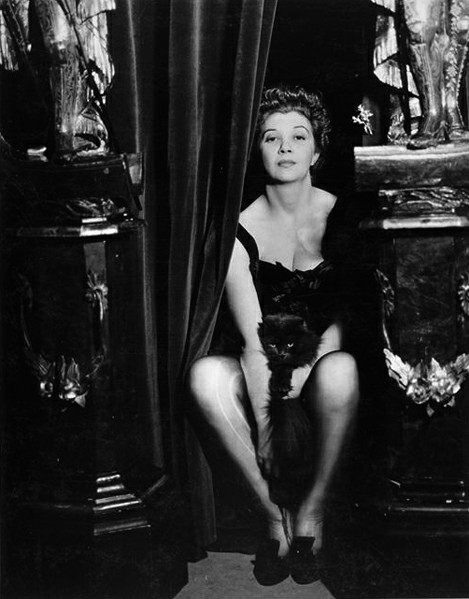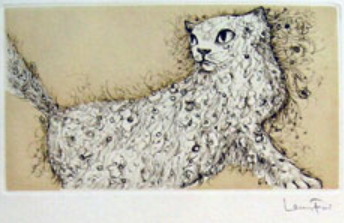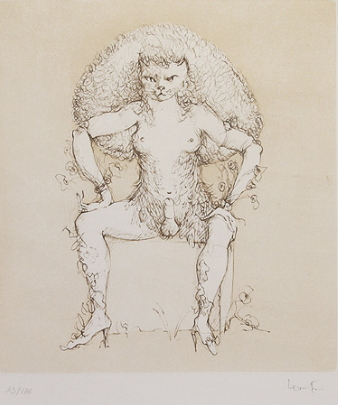♥
“I make my pictures for what Hollywood spends on lipstick.”
– Maya Deren (29th April, 1917 – 13th October, 1961)
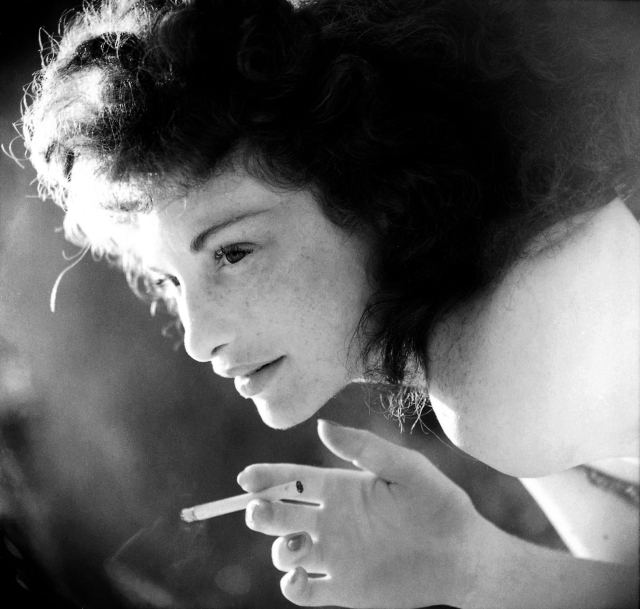
♥
“I am not greedy. I do not seek to possess the major portion of your days. I am content if, on those rare occasions whose truth can be stated only by poetry, you will, perhaps, recall an image, even only the aura of my films.”
♥

Maya Deren was in born 29th of April, 1917, as Eleanora Derenkowskaia, in Kiev, Ukraine. Her family were Jewish, and in 1922, they fled the country because of anti-Semitic pogroms, settling in Syracuse, New York, where the family surname was typically shortened to “Deren” but at least her father was able to pursue his work as a psychiatrist.
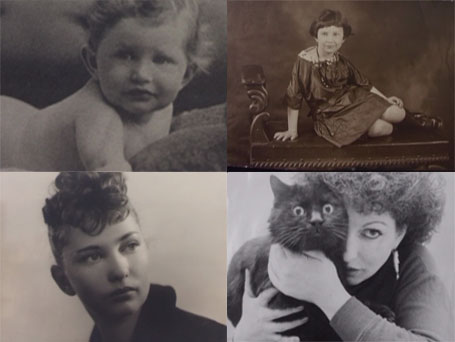
After earning a Master’s Degree in English, and having married the Czech photographer and film-maker Alexander Hammid – himself better known as ‘Sasha’ – under his influence and inspiration, Deren began to make the transition from would-be poet to film-maker. She also felt that another change was in order, as Hammid would later explain:
“Maya wasn’t always Maya. She used to be called Eleanora. Her mother used to call her Elinka, in Russian. She confided in me that she was unhappy about her name, and she asked me once to find a name for her. So I just went to the library and looked through a lot of books, mainly books on mythology. I came across the name ‘Maya’ in different connections, for instance with water – but Maya also was the name of the Mother of Buddha. In Hinduism, Maya was the name of the goddess who wove the veil over our eyes – a veil of illusion that prevents us from seeing spiritual reality behind it . . .”

Maya with Sasha and cat
♥
Maya became personal assistant to Katherine Dunham, an African-American dancer, choreographer, and anthropologist, whose fieldwork was largely concerned with Afro-Caribbean culture. Deren traveled with Dunham’s dance troupe as they toured around segregated America, and the racism she witnessed during those trips left a deep impression on her. It was during this time that she was also introduced to the interwoven relationships between dance, ritual, iconography, and metaphysical transcendence in Haitian culture, which would become such a major influence in her later life and work.
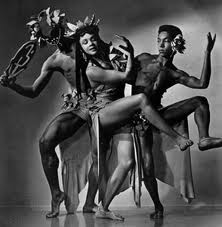
Katherine Dunham Dance Troupe
♥
Speaking of the transition from poet to film-maker, Deren wrote in 1953:
“It was like finally finding a glove that fits. When I was writing poetry, I had, constantly, to transcribe my essentially visual image . . . into verbal form. In motion pictures, I no longer had to translate . . . and I could move directly from my imagination into film.”
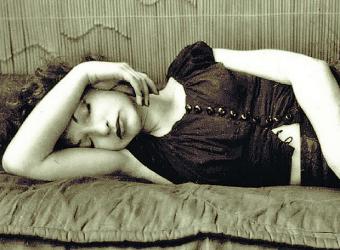
Dance also had always been an integral part of Deren’s sensibility, long before she came to film.
“My reason for creating [films] is almost as if I would dance, except this is a much more marvellous dance. It’s because in film, I can make the world dance!”
Speaking of dancers, a close friend and collaborator was the African-American actress Rita Christiani, who as well as appearing in such Hollywood fodder as Road to Morocco alongside Bob Hope & Bing Crosby, and the 1943 shlock-horror I Walked With A Zombie, featured in Deren’s Ritual In Transfigured Time (1946), along with dancer Frank Westbrook and a somewhat desultory Anaïs Nin.
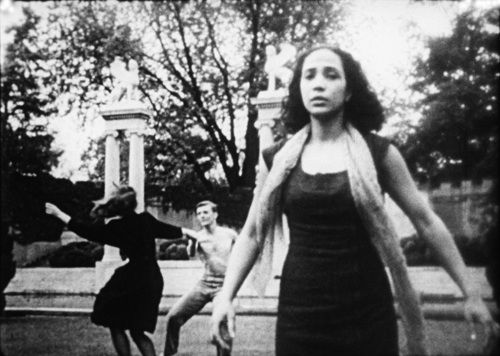
Rita Christiani in Ritual in Transfigured Time, with Frank Westbrook in the background
♥
Years later, interviewed about her friendship with Deren, Christiani remarked:
“I came from Trinidad at five years of age, and later on I found out that Maya had come from her country at five years of age, and on a boat also – so that was a commonality that might not have been expressed, but was felt by some psychic mean between the two of us . . . Because coming here, at that young age, unless you’ve experienced it you don’t know what it is: everything is new to you, and everything is so frightening to you – the people, the places, the way people talk, the way they act – and then you had to speak English, to become an American, and that was the goal: that you become American, you know?”

Another expat who had made America into her adopted home was the born-to-Cuban parents French bohemian Anaïs Nin, an erotic adventuress who had poured out her encounters, fantasies, and observations in short stories, novels, and essays – but it was the many volumes of journals [kept over 60 years, and at least 15 volumes published within her lifetime] in which she gave detailed accounts of her friendships and often intimate relations with writers such as Antonin Artaud, Lawrence Durrell, Henry (and June) Miller, and Gore Vidal, as well as her therapist, Otto Rank, and very probably her own estranged father – that had really made her into the notorious celebrity she had always wanted to be.

In the summer of 1944, when she and her friends were taking a walk on the beach of Amagansett, New York, Anaïs Nin encountered a strange scene. A woman was lying on the shore, letting herself be pummeled by the waves while two people filmed it. Later, Nin found out the woman was Maya Deren, already making a name for herself as an avant-garde filmmaker, who was filming the opening scene of At Land (1945). Nin was naturally attracted to Deren, and eventually got so involved with her films that Deren wrote a part specifically for her in Rituals in Transfigured Time (1946).
Typically, Nin – who can be seen positively pouting in her one-or-two brief appearances in the finished film (not perhaps realising, as with her comparable misadventures with Kenneth Anger and Marjorie Cameron, that her time had simply been and gone) – would characteristically attempt to have the last word, as usual, grumbling in one of her indeterminable diaries for May 1946:
“We gave (Deren) our time, our energy, and even our money . . . We believed in her as a filmmaker, we had faith in her, but we began to feel that she was not human . . . We were influenced, dominated by her, and did not know how to free ourselves.”

Anaïs Nin, as she appears in Ritual in Transfigured Time (1946)
♥
One wonders if Nin had ever been aware of this unpublished poem that Maya wrote before the filming even began:
For Anaïs Before the Glass
The mirror, like a cannibal, consumed, carnivorous, blood-silvered, all the life fed it.
You too have known this merciless transfusion along the arm by which we each have held it.
In the illusion was pursued the vision through the reflection to the revelation.
The miracle has come to pass.
Your pale face, Anaïs, before the glass at last is not returned to you reversed.
This is no longer mirrors, but an open wound through which we face each other framed in blood.
(By Maya Deren, August 19, 1945)

“Myth is the facts of the mind made manifest in a fiction of matter.”
♥
The Point of Departure:
“Myth is the twilight speech of an old man to a boy. All the old men begin at the beginning. Their recitals always speak first of the origin of life . . .”
Her anthropological field-work broke all the rules, but with her film and book, Divine Horsemen: The Living Gods of Haiti, she left behind an important document of direct encounter with the Voodoo mysteries:
“All ceremonials begin with the salute to the guardian of the Crossroads, the Loa principle of Crossing, of Communications with the Divine World . . . but that World of Les Invisibles is also the cosmic cemetery of the souls of all the Dead.”
She was actually welcomed, invited in, so to speak, when she went to Haiti to make her film – and was permitted to become an authentic initiate, because the Voodoo Community recognised her sincerity – and, more to the point, they felt she had been called by the loa.

Although it may not have been Babalon in so many words, in her experience of possession by the loa Erzulie, Deren surely had a direct and empowering experience of the Female Divine:
“What I do in my films is very – oh, I think very distinctively – I think they are the films of a woman, and I think that their characteristic time quality is the time quality of a woman. I think that the strength of men is their great strength of immediacy, they are a ‘Now’ creature, and a woman has strength to wait – because she’s had to wait: she has to wait nine months for the concept of a child. Time is built into her body in the sense of Becomingness – and she sees everything in terms of it Being in the stage of Becoming. She raises a child knowing not what it is at any moment but seeing always the person that it will Become . . .”
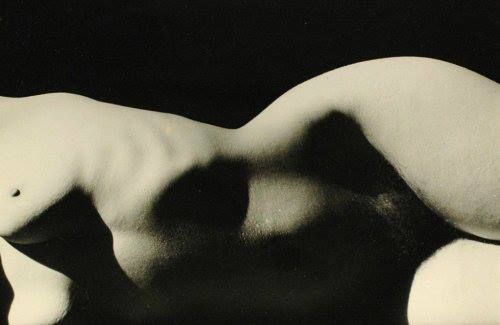
The lovely though fierce Maya Deren was not only capable of being a personification of Erzulie, but was also told by her mambo that she had a warrior spirit in her as well. Once, she was invited to administer Voodoo Rites and lay on a Reception for the Wedding of a Haitian dancer, but as the day progressed Deren became increasingly angry that the loa were not being properly honoured. Jane Brakhage Wodening – at the time the wife of Deren’s fellow experimental film-maker, Stan Brakhage – describes what happened:
“And so, when all the people were gathered at the Recepetion, Maya Deren became possessed by the voodoo god Papa Loco. She went into the kitchen and she started to roar and she picked up the refrigerator that weighed several hundred pounds and she threw it across the kitchen.”
Luckily, some members of the Wedding party who understood voodoo carried Maya upstairs to her room and stayed with her, where she sat rolling her head from side to side and roaring:
“She asked for rum to be brought and set aflame . . .
“Stan went up to Maya’s room and she was sitting up in her bed and rolling her head and roaring. The other people there, Haitians, were caring for her and not afraid because they knew it was Papa Loco. And the rum was burning with blue flames in a bowl beside the bed and Maya put her hands into the bowl of blue flames and flung them all over Stan . . . and blessed him in the name of Papa Loco.”
Arguably, this tremendous drive helped her to get her work done – often against the odds – but undoubtedly contributed to her early burn-out.
Maya Deren died in 1961, at the age of 44, from a brain haemorrhage.
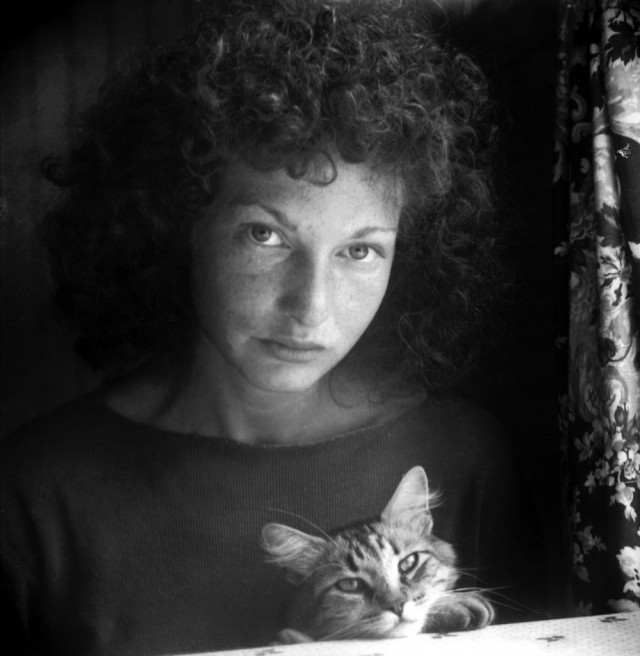
According to Mark Alice Durant, writing in a special feature for the film & photography magazine, Aperture, No. 195, in Summer 2009, Deren might not have adjusted very well to the changing times of newly-emerging underground film that she herself had unwittingly helped to create:
“As the 1950s wore on, the taste for Deren’s careful, literary, Old World aesthetic was overshadowed by less formal approaches to experimental film, such as the irreverent Pull My Daisy (1959) by Robert Frank, Alfred Leslie, and Jack Kerouac. Such films were anathema to Deren’s work. In both words and pictures, she did not indulge in casual spontaneity; it is as if, to borrow her phrase, she choreographed her life for camera.”
Luckily, we at least have the legacy she left behind of films, field recordings, and her marvellous book, Divine Horsemen: The Living Gods of Haiti.
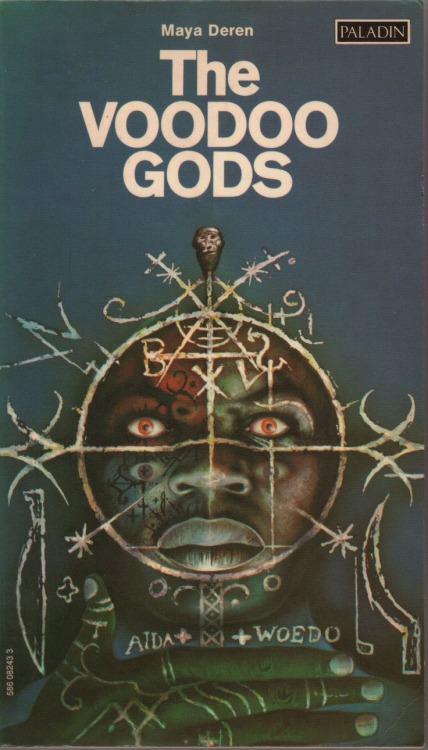
The Voodoo Gods – Paladin paperback edition (1975, U.K.) of Deren’s The Divine Horsemen
♥
THE LEGACY OF MAYA DEREN :
Meshes of the Afternoon (1943) – with Alexander Hammid.
At Land (1944) – with Hella Heyman, Parker Tyler, Philip Lamantia, Gregory Bateson, John Cage, Alvin Lustig, and Alexander Hammid.
A Study in Choreography for Camera (1945) – with Talley Beatty.
Ritual in Transfigured Time (1946) – with Rita Christiani, Frank Westbrook, Hell, and Gore Vidal.
Meditation on Violence (1948) – with Chao-Li Chi, music by Teijo Itō.
The Very Eye of Night (1958) – in collaboration with Metropolitan Opera Ballet School, music by Teijo Itō.

Stills from various films by Maya Deren
♥
Among the archives of the New York Film-Maker’s Co-Op, lovingly preserved by Jonas Mekas, there are also a number of short, unfinished works, such as Witch’s Cradle made with Marcel Duchamp in 1943, the touching 1947 home-movie with Sasha Hammid, The Private Life of a Cat, as well as lost and unfinished fragments such as Medusa (1949), Ensemble for Somnambulists (1951), as well as something called “Lascivious Folk Ballet” – apparently the only surviving sequence from a project entitled Ritual & Ordeal, which is notable if only for the fact we get to hear Maya sing, in her smokey, late-night, husky voice, a kind of proto-Blues Rock, whose lyrics run:
“I got stones in my head,
I got pebbles in my bed,
In my head they rattle,
In my head they pound,
Cant ya hear ’em ?
Stones . . .
Stones.”
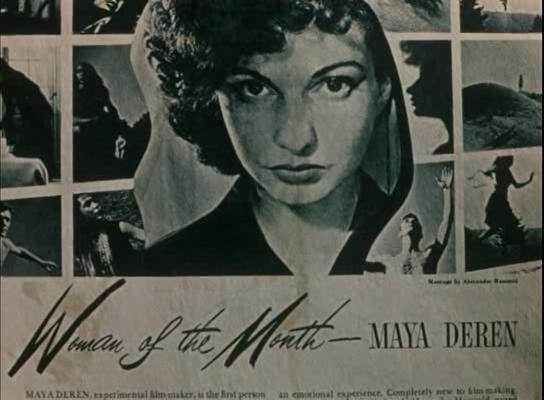
In addition, she also released an LP of the wire-recordings she had made during various ceremonials while travelling in Haiti, and of course there were the many, many hours of footage she had recorded during her numerous visits over 18 months – mostly funded by the Guggenheim Foundation. These were eventually edited together from Deren’s extensive notes by her former husband, the composer Teijo Itō and his new wife, Cherel Winett Itō, with considerable financial assistance from Deren’s close friend, the wealthy philanthropist and poet, James Merrill.

NB: A free and legal version of both sides of this album, converted to mp3 form, and with the excerpted liner-notes from the cover, is currently available as part of the excellent U B U W E B : S O U N D online archive here :
http://www.ubu.com/sound/deren.html
♥
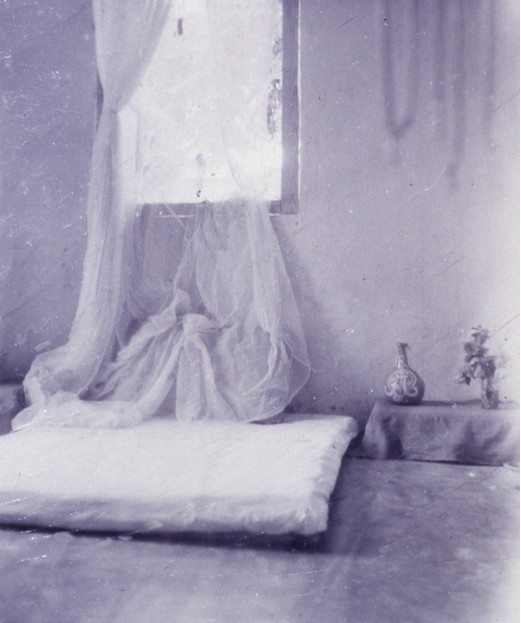
Maya Deren’s sleeping quarters in Haiti, c.1947-1952
♥

